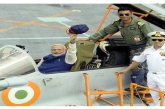
Mining operations use water for mineral processing and metal recovery, controlling dust, and meeting the needs of workers on site. The use of water in mining has the potential to affect the quality of surrounding surface water and groundwater. Keeping in view the fast depleting resources of water and potential role of mining in polluting surrounding surface and groundwater resources, a two-day National Conference on ‘Water and its Sustainability in Mining and Other Environments: Vision 2050 (WSME 2014) was held at Dhanbad on 28-29 March 2014 under the auspices of the Department of Civil Engineering, Indian School of Mines (ISM).
B.C. Sarkar, Head (Civil Engineering), and convener of the conference, in his welcome address introduced the theme of WSME 2014 and emphasized on the need for training programmes for capacity building in the field of water resource development and management in India. He also highlighted various activities of the department of civil engineering at ISM, which is just a little more than a year old.
S.C. Dhiman, former Chairman, Central Ground Water Board (CGWB), graced the occasion as the Chief Guest of the inaugural function. In his inaugural address, the Chief Guest remarked that the conference was not only a relevant event on the subject, but also of crucial importance that denoted a landmark development in the history of institutions offering courses in civil engineering. He highlighted the importance and impact of mining on water resources and urged that water be treated as a resource in mining. He also emphasized the need to implement rain water harvesting and artificial recharge. He further added that ISM has one of the best roof-top artificial recharge structures in the country worthy of emulation.
D.C. Panigrahi, Director, ISM and patron of the conference, welcomed the participants and apprised them about the latest developments and future expansion plans of ISM. While emphasizing that water shortage is the world’s most pressing problem, he stressed on the need for a meaningful and sustainable development and management of water resources. S.C. Dhiman along with D.C. Panigrahi released the conference proceedings and souvenir volume. Vote of thanks was proposed by Sreevalsa Kolathayar, organizing secretary, WSME 2014.
The two-day conference was attended by more than 90 participants from academic institutions, R&D organisations, corporate houses and industry. Eight invited keynote papers that were presented and deliberated upon, inter alia included:
(i) Post Mining Water Management by N. C. Saxena; (ii) Ground-water Development and Rainwater Harvesting in Greater Bengaluru by R.H. Sawkar; (iii) Role of Human Face in Safeguard of our Environment with special reference to Water by Mamta Bose; (iv) Mineral Sand Mining below Fresh Water Coastal Aquifers – An Attempt towards removing Myths and Apprehensions by Arijit Bagchi; (v) New Resources of Groundwater for Safe Drinking Water Supply in Semi-arid and Fluoride Affected Areas : The examples of River Ajay, Birbhum district, West Bengal by P.K. Sikdar; (vi) Aquifer Modelling: A Geo-statistical Approach by B.C. Sarkar; (vii) Impact of Iron Ore Mining on Water Resources in Goa by S.C. Dhiman; and (viii) Impact of Coal Mining Activity on Ground water Regime – A Review on Jharkhand State by Dipankar Saha.
Another important invited keynote paper, namely, Civil Society Stewardship in Water Conservation in Industry and Mining Sectors was by Arvind Kumar, President of India Water Foundation. There were five technical sessions with 31 papers, out of which 27 were presented.
A panel discussion was organised in the afternoon of 29 March 2014 to deliberate on the future directions for research vis-à-vis the practical needs for the benefit of the industry and stakeholders. The panel was chaired by S.C. Dhiman and other members of the panel included eminent scientists and technologists, namely, R.H. Sawkar, P.K. Sikdar, Dipankar Saha and B.C. Sarkar. A number of pertinent suggestions for the future development came from the delegates. Following recommendations emerged out of the discussions:
- The task of assessment of ore and its sustainability as a mineral deposit are being carried out from the stage of planning of mining activities for exploration, exploitation and closure of the mines. Water, which is becoming scarce day by day, necessitates to be assessed as a resource along with the minerals for its sustainability and conservation. Mine water which is not used fully is to be linked to the water networks (Central as well as State) and thus to be used for domestic/agricultural/ industry in a sustainable, efficient and cost effective manner on a long term basis. Sustainable management of mine water resource offers an alternate source of water in the mining belts
- For sustainable supply of safe drinking and irrigation water, complete and comprehensive plans are to be drawn corresponding to the aquifer framework for conservation and management of water resources and for revival of surface and sub- surface water flows and drying aquifers due to mining activities and imbalance in hydrological cycle.
- Aquifer mapping programme needs to be taken up to understand and to develop a relationship with land and water resources for assessment, conservation and sustainable management of land-water resources.
- In coastal region, with the over-exploitation of water resource, the fresh water zones are shrinking and sea water is intruding into the fresh water. This is further accelerated by shrimp farming in the coastal areas. Fresh water horizons are to be protected from sea water (saline) ingression by maintaining a natural equilibrium of fresh and saline water. Area specific R&D studies are to be taken up to develop eco-friendly and cost effective techniques.
- A number of software is being used for the purpose of modelling and simulation of Aquifer Systems for planning of water resources.

